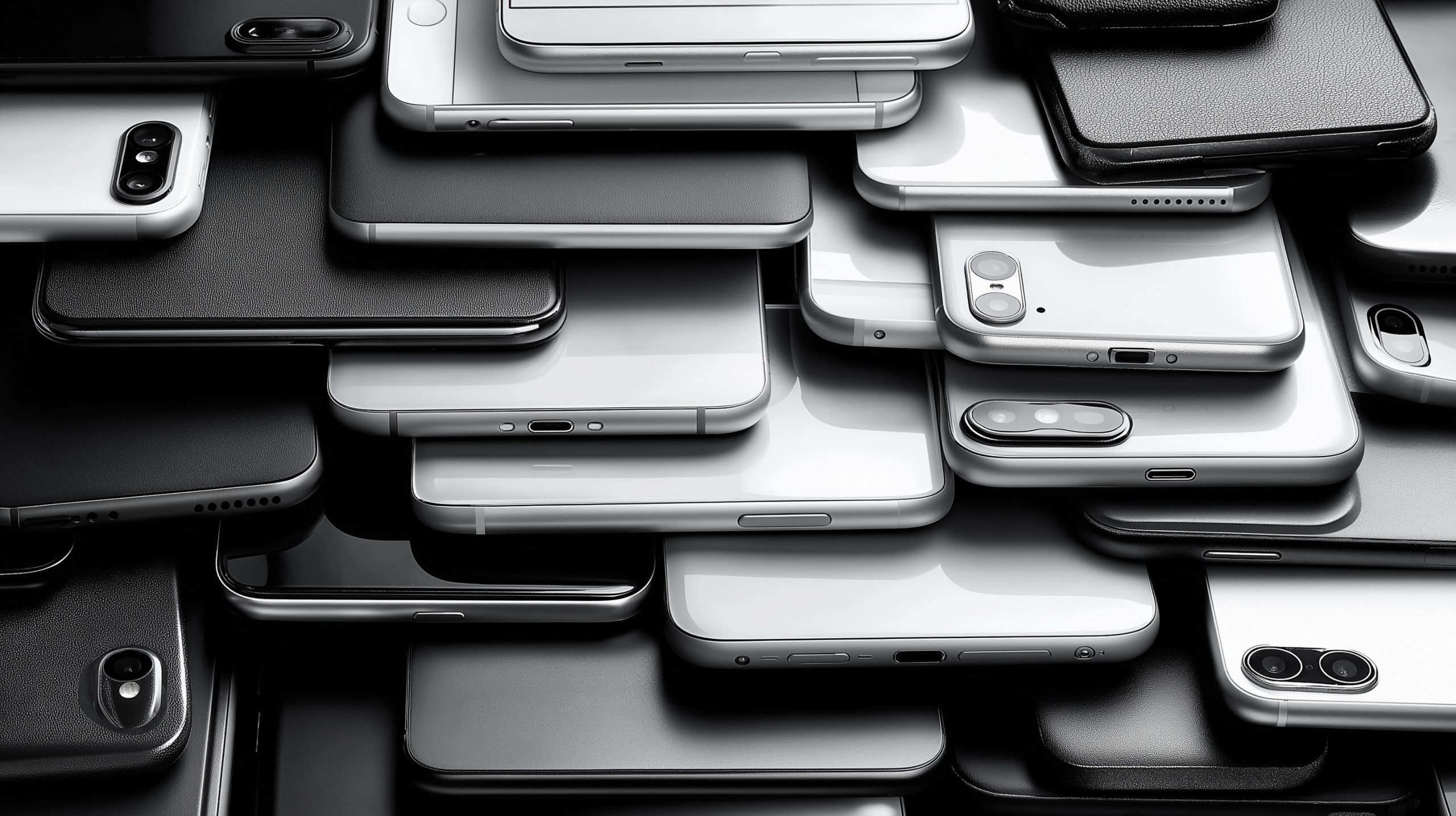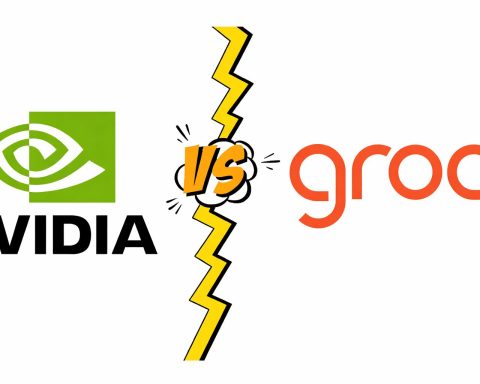- Samsung unveiled the Galaxy Z Fold7 and Galaxy Z Flip7 in Summer 2025; Fold7 is the thinnest and lightest large-format foldable at 8.9 mm folded.
- Fold7 features a reengineered hinge that reduces the display crease and a 200 MP main camera—the first 200 MP on Samsung foldables.
- Fold7 includes an 8-inch inner display for multitasking, while the Flip7 adds a 4.1-inch edge-to-edge cover screen called FlexWindow.
- Both devices ship with One UI 8 on Android 16 out of the box, showcasing Galaxy AI features.
- Fold7 starts around $1,999 in the U.S., and Samsung also launched the cheaper Galaxy Z Flip7 FE at $899.
- Fold7 is about 10% lighter and 26% thinner than its predecessor, while Flip7’s hinge is sturdier yet slimmer.
- Global foldable share remains around 1.5% of the smartphone market, and Samsung foldables account for 4% of Samsung unit sales (16% of phones over $800).
- Samsung teased a tri-foldable phone by year-end, signaling the next chapter in foldable design.
- Xiaomi introduced the Mix Flip 2 as its first flip-style phone, with a 6.85-inch LTPO AMOLED inner display, a 4.01-inch outer screen, a 5,100 mAh battery, 67W wired and 50W wireless charging, IPX8, and Leica-tuned dual cameras.
- At WWDC 2025, Apple announced iOS 26 with Liquid Glass, and rumors point to iPhone 17 variants with a 6.3-inch Pro and 6.9-inch Pro Max, an A19 chip, up to 8 GB RAM on non-Pro, and a Pro Max battery around 5,000 mAh.
Samsung’s Foldable Leap Forward
Samsung kicked off summer 2025 by unveiling its Galaxy Z Fold7 and Galaxy Z Flip7, pushing foldable phones further into the mainstream. The new Fold7 is Samsung’s thinnest and lightest large-format foldable yet (just 8.9 mm folded) [1], with a reengineered hinge that reduces the display crease and boosts durability [2]. It packs a 200 MP main camera – a first for Samsung foldables – and a brighter 8‑inch inner display for improved multitasking [3] [4]. The compact Flip7 also saw major upgrades, gaining a larger 4.1-inch edge-to-edge cover screen (the “FlexWindow”) and the biggest battery yet in a Flip (4,300 mAh) [5] [6]. Both devices launch with One UI 8 on Android 16 out of the box, showcasing Samsung’s latest AI features tailored for foldables [7] [8]. “Galaxy Z Fold7 combines Galaxy AI with powerful hardware to deliver our most advanced smartphone experience yet,” said TM Roh, Samsung’s mobile chief, adding that this “next chapter of foldables” offers an “ultra” experience – “powerful, immersive, intelligent, and portable all in one” [9].
Samsung’s foldable strategy this year also targets emerging competition. Choi Won-joon, Samsung’s Mobile president, noted in an interview that “foldable phones, integrated with AI features, are ready to become mainstream by offering a unique, differentiated experience” [10]. The Galaxy Z Fold7’s price reflects its premium positioning – it starts around $1,999 in the U.S., a 5% hike over last year [11]. To broaden appeal, Samsung simultaneously introduced a cheaper Galaxy Z Flip7 FE model at $899 [12]. Analysts say Samsung’s latest designs address past pain points like bulk and durability [13]. The Fold7 is about 10% lighter and 26% thinner than its predecessor [14], and the Flip7’s hinge is sturdier yet slimmer [15]. Even so, high prices and limited use-cases mean foldables remain a niche at roughly 1.5% of the global smartphone market [16]. Samsung’s foldables currently make up only 4% of its unit sales (albeit 16% of phones over $800) [17]. With Chinese rivals like Huawei and Honor rapidly growing their foldable sales in Asia [18], Samsung is focusing its Fold7/Flip7 launch on the US, Europe, and Korea [19] to defend its turf. Company executives even teased what’s next: at the launch event, TM Roh revealed Samsung is “working towards” a tri-foldable phone by year-end [20] – hinting that the foldable race is only heating up.
Apple’s iOS 26 Redesign and iPhone 17 Rumors
Apple didn’t release new iPhones in June-July, but it still made headlines with iOS 26 and intensifying iPhone 17 leaks. At WWDC 2025 in early June, Apple surprised developers by renaming the next iPhone OS “iOS 26” (skipping the expected iOS 19 moniker) [21] [22]. The upcoming update brings a dramatic visual overhaul called “Liquid Glass” that gives the interface a translucent, glass-like depth across apps and widgets [23] [24]. Apple’s Craig Federighi, SVP of Software Engineering, said iOS 26 “brings a beautiful new design, intelligent experiences, and improvements to apps users rely on every day” [25] [26]. Core apps like Phone and Messages are getting smarter – for example, Live Voicemail screening and a Hold Assist that listens to hold music for you [27] [28]. An upgraded Apple Intelligence engine will let users invoke on-device AI for tasks like live translating a FaceTime call or querying a ChatGPT-style assistant about what’s on screen [29] [30]. These moves highlight Apple’s increased focus on AI features, an area where it’s playing catch-up to rivals. iOS 26’s polished redesign and privacy-centric AI tools (available across iPhones and iPads) have drawn praise, setting the stage for the next iPhone’s launch in the fall.
Meanwhile, iPhone 17 rumors hit a fever pitch by July. Apple is expected to stick to its usual September reveal [31], but leaks suggest some noteworthy changes. One rumor claims Apple will expand the lineup with a new ultra-thin “iPhone 17 Air” model, replacing the previous Plus version [32]. This so-called Air would slot between the base iPhone 17 (6.27″ display) and the Pro models with a 6.65″ screen, targeting those who want a bigger display without the Pro price [33]. All iPhone 17 versions are likely to adopt Apple’s next-gen A19 chip and finally bump RAM up to 8GB on non-Pro iPhones [34]. On the Pro side, Apple appears set to maintain two tiers: a 6.3″ iPhone 17 Pro and a 6.9″ Pro Max [35]. Notably, the Pro Max may grow slightly thicker (+5%) to fit a larger battery (~5,000 mAh) – crossing that milestone for the first time on an iPhone [36]. Both Pro models are rumored to share the same triple 48 MP rear cameras (wide, ultra-wide, and 3x telephoto) and even a new 24 MP front camera, meaning the Max might not have exclusive camera perks this year [37] [38]. Early chatter about a smaller Face ID “Dynamic Island” cutout was mixed, with latest reports saying any shrink might be delayed to 2026 models [39]. Overall, the consensus is that iPhone 17 will be an iterative upgrade – possibly with a refreshed back design or new colors (a pale sky blue is rumored) [40], but no revolutionary features before the iPhone 18 next year [41]. Still, anticipation is high. Apple’s tight-lipped approach hasn’t stopped the grapevine: industry watchers are already speculating about Apple’s first foldable device arriving in 2026, which, if true, could radically shake up the market [42]. For now, though, Apple seems content to refine the slab smartphone formula while its new iOS 26 polishes the user experience for millions of iPhones.
Xiaomi’s Big Moves: Foldables, Tablets…Even an EV
Chinese giant Xiaomi made one of the summer’s splashiest announcements with a late-June product showcase in Beijing that underscored its expanding tech empire [43] [44]. The star of the event was the Xiaomi Mix Flip 2, Xiaomi’s first flip-style foldable phone, marking the company’s entry into clamshell foldables. The Mix Flip 2 is designed to go head-to-head with Samsung’s Flip series [45]. It features a 6.85-inch LTPO AMOLED inner display and a small 4.01-inch outer screen, plus flagship internals like the Snapdragon 8 Elite chipset and a Leica-tuned dual camera setup [46] [47]. Unusually for a flip, Xiaomi managed to fit a 5,100 mAh battery – giving it one of the largest batteries in any flip phone – alongside 67W wired / 50W wireless charging, addressing a common flip-phone weakness [48]. With IPX8 water resistance and Leica optics on board, the Mix Flip 2 aims to deliver a premium foldable experience. Xiaomi confirmed it has no “Fold” (book-style) model coming in 2025, putting all its foldable focus on this Flip device [49]. By offering a pocketable foldable that doesn’t compromise on battery life, Xiaomi is signaling it’s ready to challenge Samsung’s dominance in this category. (“We’re bringing our A-game to foldables,” Xiaomi’s CEO Lei Jun had hinted earlier this year, pointing to the company’s heavy R&D investment in new form factors – source in Chinese media.)
Beyond smartphones, Xiaomi’s event showcased its widening ambitions. For mobile gamers, Xiaomi unveiled the Redmi K80 Ultra, a turbo-charged phone launching as Redmi’s “summer performance flagship” with top-end silicon and aggressive pricing [50]. On the Android tablet front, Xiaomi introduced two new tablets: the Redmi K Pad, an 8.8″ compact gaming tablet with a 165 Hz LCD and cutting-edge 3 nm Dimensity 9400+ chip [51], and the larger Xiaomi Pad 7S Pro with a 12.5″ 3.2K 144 Hz display [52]. Notably, the Pad 7S Pro debuts Xiaomi’s own Xring O1 co-processor chip to optimize performance and power – a sign Xiaomi is developing in-house silicon to complement its devices [53] [54]. The event even stepped outside typical consumer electronics: Xiaomi formally took the wraps off its first electric vehicle, the Xiaomi YU7 SUV [55]. This electric SUV boasts a claimed 96 kWh battery and ~835 km range, extending Xiaomi’s brand well beyond phones. The multi-category launch – spanning phones, tablets, wearables (a Smart Band 10 fitness tracker was also announced) [56], and even a car – underscores how Xiaomi is positioning itself as an all-encompassing hardware ecosystem player. While the smartphone remains its centerpiece, Xiaomi is clearly leveraging its success in phones to springboard into cars and IoT. This diversification comes as the Chinese smartphone market matures; Xiaomi and peers are seeking growth by offering consumers an integrated lifestyle of Xiaomi gadgets. With the Mix Flip 2 and other devices launching in China first (a global rollout is expected later in the year), Xiaomi is also signaling confidence that it can compete on innovation at home and abroad. As one Chinese tech analyst observed, “Xiaomi is no longer just chasing Apple or Samsung in phones – it’s now competing in everything from wearables to EVs”. The summer showcase certainly drove that point home.
New Contenders from OnePlus, Vivo, Oppo and More
Summer 2025 also saw a flurry of new smartphone launches across the board, especially in India and China. OnePlus introduced the OnePlus 13s, a streamlined 6.3-inch flagship aimed at those who prefer compact phones [57]. Essentially a smaller sibling to the OnePlus 13, the new 13s still packs top-tier specs: a bright LTPO AMOLED display (1.5K resolution, 1600 nits peak) and Qualcomm’s latest Snapdragon 8 Elite chip [58]. OnePlus even fitted a large 5,850 mAh battery and 80W charging in this smaller device, while adding niceties like an IP65 rating and a customizable side key [59]. Priced at ₹54,999 (≈$640) in India [60], the OnePlus 13s underscores the brand’s strategy of offering flagship power at slightly lower prices than Samsung or Apple. Across the tech community, OnePlus earned kudos for keeping a “compact flagship” option alive in an era of ever-bigger phones.
Vivo also made waves with its camera-centric Vivo T4 Ultra. This mid-range phone flirts with high-end features – it runs on a new Dimensity 9300+ chip and sports a curved 6.78″ AMOLED display [61]. Impressively, Vivo managed to include a periscope telephoto lens (50 MP, 3× optical) in the T4 Ultra [62], a feature rarely seen in its ~$440 price segment. The device supports 90W fast charging and carries a hefty 5500 mAh battery [63]. Vivo is also touting its software enhancements: the T4 Ultra ships with Android 15 and Vivo’s latest Funtouch OS, which adds new AI tricks like “Circle to Search” visual search and an improved object eraser tool [64]. These AI features – clearly influenced by trends in Samsung’s One UI and Google’s Pixel – show how Chinese OEMs are integrating more smart features into their Android skins. Slightly lower on the ladder, Oppo targeted budget buyers with its Oppo K13x. Slated for an India launch in late June [65], the K13x comes with a MediaTek Dimensity 6300 chip and a massive 6000 mAh battery, emphasizing endurance over cutting-edge specs [66]. Oppo has been teasing the K13x in flashy Midnight Violet and Sunset Peach colors [67] – a sign of how style and battery life are key selling points in the lower-midrange segment.
Nothing, the startup led by ex-OnePlus co-founder Carl Pei, made headlines by officially launching its anticipated Nothing Phone 3 on July 1. Billed as the company’s “first true flagship”, the Phone 3 steps up to compete with premium devices [68]. It’s priced at $799 – right in line with an iPhone or Galaxy S-series – and for the first time Nothing is doing a full launch in the U.S. alongside Europe [69]. The Phone 3’s design still screams “Nothing” with its transparent back, but it dropped the quirky LED glyph light strips of prior models in favor of a more practical dot-matrix mini-display on the rear [70] [71]. This so-called “Glyph Matrix” can display notifications, custom icons, and even mini-games (Yes, you can literally play spin-the-bottle on the back screen) [72] [73]. “The Glyph interface is not a gimmick,” Carl Pei, Nothing’s CEO, insisted at the launch, as he demoed the new dot-matrix panel [74]. Under the hood, the Phone 3 mostly delivers flagship-grade hardware: a Snapdragon 8s Gen 4 chipset, up to 16 GB RAM, 256/512 GB storage, and a 6.67″ 120 Hz flexible OLED that can hit 4,500 nits peak brightness [75] [76]. It also boasts an IP68 rating (a first for Nothing) and a large 5,150 mAh silicon-carbon battery supporting 65W wired and 15W wireless charging [77] [78]. Intriguingly, all four cameras on the device are 50 MP sensors (three on the back – main, ultra-wide, telemacro – plus a 50 MP selfie cam) [79]. Nothing promises that this quad-50MP setup, combined with improved image processing, will finally put its camera quality on par with rivals. The Phone 3 launches with Android 15 (Nothing OS 3.5) and a generous pledge of 5 years of updates [80] [81], signaling long-term support. By shedding some of the overly “quirky” design elements and focusing on core specs and software polish, Nothing seems to be maturing. Early reactions have praised the Phone 3’s build quality and playful touches (like the customizable rear display) – it shows a young brand trying to stand out without just being a novelty. As one reviewer put it, “Nothing Phone 3 blends standout design with solid performance… it might be the most fun phone you can buy in 2025”. Time will tell if it truly challenges the big players, but it’s clear Nothing has upped its game to stake a claim in the flagship arena [82] [83].
Several other brands also rolled out notable devices. Xiaomi’s sub-brand Poco launched the Poco F7 in India, essentially a rebadged Redmi device focused on raw performance [84]. It runs on a Snapdragon 8s Gen 4 chip with Xiaomi/Poco’s new “Rage Engine 4.0” optimizations, reportedly hitting AnTuTu scores above 2 million – an impressive feat for a mid-tier phone [85]. The Poco F7 also packs a huge 7,550 mAh battery and aggressive pricing around $370 [86], exemplifying the high-value gaming phone trend. Motorola, now under Lenovo, introduced the Motorola Edge 60 in India, a midrange device with an emphasis on durability [87]. It features a quad-curved 6.67″ pOLED display and a quad-camera array (50 MP main, 50 MP ultra-wide, 10 MP telephoto, plus a high-res 50 MP selfie) [88]. More impressively, the Edge 60 comes with IP68/69 and MIL-STD-810H ruggedness ratings [89] – unusual at its roughly $300 price – making it one of the toughest phones in its class. And for mobile gamers on a tighter budget, Infinix rolled out its GT 30 Pro, complete with 144 Hz AMOLED screen and even attachable magnetic cooling fans for sustained performance [90]. It’s clear that from budget to premium, the mid-2025 smartphone releases catered to every niche: camera enthusiasts (Vivo T4 Ultra), compact phone fans (OnePlus 13s), power users on a budget (Poco F7, Infinix GT), and those who simply want something different (Nothing Phone 3). This diverse lineup reflects a fiercely competitive market, especially in Asia, where brands are rapidly adopting flagship-level features into mid-range phones.
Software Updates and Android’s Next Chapter
On the software side, Android kept evolving in early preview form. While Google’s stable Android 15 release is expected later in 2025, many new phones are already launching with Android 15 beta builds. Manufacturers like Vivo and OnePlus have incorporated Android 15 into their latest models (with their own skins on top) [91]. Google’s Android 15 is rumored to refine the Material You design and add more AI-driven conveniences. For instance, an updated Google Assistant is being tested that can summarize and read aloud on-screen content – a nod to the AI summarization trend that Nothing even built into its phone (Nothing’s “Flip to Glyph” feature can generate AI summaries of voice recordings) [92] [93]. By July, Google had also begun limited previews of Android 16 (“Canary” builds) for developers [94] [95], indicating an accelerated timeline. In fact, Samsung’s new Fold7 and Flip7 surprisingly ship with Android 16 (under One UI 8) months before Google’s own Pixel phones are expected to get it [96]. This unusual situation – Samsung beating Google to the punch on an Android version – underscores how closely Samsung and Google partnered on this launch, especially to integrate advanced AI features (code-named “Gemini”) into One UI 8 [97] [98]. Samsung’s approach is to deeply bake AI assistants into the UI: the Fold7 can perform on-device multimodal AI tasks like live language translation and image generation without cloud help [99] [100]. Vivo’s Funtouch OS and Oppo’s ColorOS are following suit with their own AI enhancements. Oppo began rolling out ColorOS 15 (based on Android 15) in China, and has already started testing ColorOS 16 internally to launch alongside Android 16 later this year [101]. Vivo’s Funtouch OS 15 likewise introduces quality-of-life tweaks – larger app icons, smoother animations, etc. – and new personalization options [102]. Even Xiaomi, which transitioned from “MIUI” to its HyperOS platform in late 2024, is on HyperOS 2 by mid-2025 [103] [104], unifying the experience across its phones, tablets and upcoming smart car. In short, smartphone software in 2025 is all about AI and ecosystem consistency. Tech companies are racing to make their OS experiences smarter and more seamless: from context-aware smart search on Nothing OS 3.5 [105] to Apple’s deeper on-device intelligence in iOS 26 [106]. Users can expect their phones to feel more personalized – anticipating needs, filtering messages, translating conversations – thanks to these software updates. And with major UI redesigns (Apple’s Liquid Glass, Samsung’s One UI 8 visual refresh) landing this year, both of the dominant mobile platforms are getting a fresh coat of paint to keep things interesting.
Market Trends: Asia’s Resurgence and Global Shifts
Mid-2025 has brought significant shifts in the smartphone market landscape, particularly in Asia. In China, the world’s largest smartphone market, domestic champion Huawei is staging a comeback. In June, Huawei launched its new Pura 80 flagship series in China, and early sales have been robust [107] [108]. Market analysts at Counterpoint projected that Huawei would jump to the #1 smartphone spot in China for Q2 2025, its first time leading the Chinese market in years [109] [110]. This surge comes thanks to a loyal user base finally upgrading to new Huawei models after a long gap (Huawei’s device releases were hampered by US sanctions). “Huawei is still riding high on the loyalty of its core users as they replace their old phones with new Huawei releases,” noted Ivan Lam, a Senior Analyst at Counterpoint Research [111]. Huawei’s Pura 80 Ultra model, with its 1-inch camera sensor and dual telephoto lenses, has been especially popular, helping restore Huawei’s premium image [112] [113]. Interestingly, Apple also saw a boost in China during Q2 – Apple’s sales were up in the high single digits year-on-year, fueled by aggressive promotions on the iPhone 16 Pro/Pro Max and government consumer subsidies [114] [115]. “Apple’s adjustment of iPhone prices in May was well timed and well received, coming a week ahead of the 618 shopping festival,” observed Ethan Qi, Associate Director at Counterpoint [116] [117]. Those subsidies and holiday sales (China’s “618” mid-year shopping fest) lifted both Apple and Huawei in an otherwise muted market. Overall, China’s smartphone sales for Q2 2025 are expected to be slightly up year-on-year [118] – a sign of stabilization after many quarters of decline. However, analysts caution that the government subsidy program may be scaled back in H2 2025, which could soften demand again [119]. Still, the first half of 2025 has shown that Chinese consumers will splurge for innovation (whether Huawei’s new tech or Apple’s polished ecosystem) when enticed with the right deals.
In India, the world’s second-largest market, competition remains fierce in the mid-range segment which dominates sales. Brands like Samsung, Xiaomi, Vivo, and Realme continue to jostle for the top positions quarter by quarter. While no new market-share data was released over June–July, anecdotal evidence suggests 5G phone upgrades are driving sales, and Chinese OEMs have rebounded after supply chain issues in prior years. OnePlus is betting on the Indian market with its Nord series (a Nord 5 and Nord CE 5 are rumored to launch soon in India [120]), and Transsion brands (Tecno, Infinix) are gaining ground by offering premium features at ultra-low prices. India also saw a government push for locally manufactured smartphones, which has led to more “Made in India” devices on shelves this summer, though consumers remain brand-sensitive and value-focused.
In the United States, the market is skewing ultra-premium, but economic headwinds are a concern. Market research firm IDC reported that U.S. smartphone sales could see a double-digit decline in 2025 if economic uncertainty and import tariffs persist [121] [122]. (Notably, the U.S. government has been deliberating new tariffs on Chinese-made smartphones; Samsung, which produces many phones in Vietnam, even expedited shipments to the U.S. ahead of potential tariff changes [123].) IDC now forecasts only 0.6% growth in global smartphone shipments for 2025, down from an earlier 2.3% forecast – essentially flat growth [124]. “High uncertainty, tariff volatility and macro-economic challenges… [are] leading to a slowdown in consumer spending,” IDC stated in lowering its outlook [125]. Still, the U.S. is relatively resilient: carrier subsidies and trade-in deals continue to prop up high-end sales. “The unique structure of the U.S. market – where most devices are bought through carriers with robust trade-in offers and financing – helps fuel demand” even in tough times, explained Anthony Scarsella, research director at IDC [126]. This is one reason Apple and Samsung’s flagships (which dominate carrier lineups) remain steady sellers. In fact, Apple overtook Samsung as the #1 global smartphone vendor in 2023 and has kept that crown into 2025 in unit terms [127] [128], thanks in large part to its strength in Western markets.
Europe presents a mixed picture. The overall European smartphone market has been flat, with little growth in H1 2025 as inflation and the Ukraine war’s effects linger. One notable trend: foldables are still a tiny slice in Europe (≈1–2% of sales), and Samsung’s share of that slice is shrinking as Chinese foldables (like Honor’s Magic Vs and Huawei’s Mate X3, albeit limited in Europe due to 5G issues) find niche buyers [129] [130]. Research from Canalys showed Samsung’s foldable shipments in Europe barely grew in early 2025, leading Samsung to double down on the “halo effect” of foldables – marketing them as tech-luxury devices to boost brand image even if volumes are low [131] [132]. On the other hand, mid-range 5G phones from Xiaomi, Oppo, and Samsung’s A-series continue to sell well in various European countries, where consumers seek value. There’s also a regional shift: Chinese brands Oppo and OnePlus withdrew from some European markets (like Germany) earlier, but are focusing on Southern and Eastern Europe where they still see growth potential.
Across the globe, one clear trend is the premiumization of the market. Phones priced above $800 now account for over 20% of worldwide sales value, and brands are leaning into that. Samsung’s strategy of pushing foldables as aspirational products is part of this, as is Xiaomi’s entry into higher price tiers (with its 13/13 Ultra and forthcoming 14 series). Even mid-range focused companies are introducing “flagship killers” that edge into premium pricing (Nothing at $799, OnePlus’s main line around $699+). Consumers are holding onto phones longer (replacement cycles in many regions now exceed 3+ years), but when they do upgrade, they are often willing to spend more for a device that will last. That has driven up the average selling price (ASP) of smartphones in 2025. According to one industry analysis, the global smartphone ASP hit $415 in Q2 2025 – a record high – thanks to strong sales of Pro iPhones and foldables.
Looking ahead, analysts are cautiously optimistic. “We’re actually expecting negative growth for the [foldable] segment in 2025, which will be a first,” noted Jene Park, a Senior Analyst at Counterpoint, adding that 2025 is a “regrouping” year before an “exciting and rejuvenating” 2026 when Apple is expected to enter the foldable race and many new models will flood the market [133]. For the overall market, IDC’s Nabila Popal said any further economic or tariff hits could cause a “downside risk” to shipment forecasts [134] [135]. But if smartphone makers successfully entice consumers with new form factors, AI features, and ecosystem gadgets (as we saw this summer), they may keep the upgrade cycle ticking. The remainder of 2025 promises big launches – from Google’s Pixel 10 series to the iPhone 17 family and perhaps Samsung’s tri-fold concept – which could sway the momentum. For now, the June-July roundup makes one thing clear: the smartphone arena is more dynamic than ever, with companies large and small vying to innovate, whether through foldable screens, AI smarts, or just bold business moves. As consumers, we’re reaping the benefits of this intense competition – in the form of better devices and more choices – during what has been an exciting summer for smartphone enthusiasts worldwide [136] [137].
References
1. news.samsung.com, 2. news.samsung.com, 3. news.samsung.com, 4. news.samsung.com, 5. news.samsung.com, 6. news.samsung.com, 7. news.samsung.com, 8. news.samsung.com, 9. news.samsung.com, 10. www.reuters.com, 11. www.reuters.com, 12. www.reuters.com, 13. www.reuters.com, 14. www.reuters.com, 15. news.samsung.com, 16. www.reuters.com, 17. www.reuters.com, 18. www.reuters.com, 19. www.reuters.com, 20. www.reuters.com, 21. www.techradar.com, 22. www.techradar.com, 23. www.macworld.com, 24. www.foxbusiness.com, 25. www.foxbusiness.com, 26. www.foxbusiness.com, 27. www.macworld.com, 28. www.foxbusiness.com, 29. www.foxbusiness.com, 30. www.foxbusiness.com, 31. www.macworld.com, 32. www.macworld.com, 33. www.macworld.com, 34. www.macworld.com, 35. www.macrumors.com, 36. www.macrumors.com, 37. www.macrumors.com, 38. www.macrumors.com, 39. www.macrumors.com, 40. www.macworld.com, 41. www.macrumors.com, 42. www.counterpointresearch.com, 43. www.gizmochina.com, 44. www.gizmochina.com, 45. www.gizmochina.com, 46. www.gizmochina.com, 47. www.gizmochina.com, 48. www.gizmochina.com, 49. www.gizmochina.com, 50. www.gizmochina.com, 51. www.gizmochina.com, 52. www.gizmochina.com, 53. www.gizmochina.com, 54. www.gizmochina.com, 55. www.gizmochina.com, 56. www.gizmochina.com, 57. www.gizmochina.com, 58. www.gizmochina.com, 59. www.gizmochina.com, 60. www.gizmochina.com, 61. www.gizmochina.com, 62. www.gizmochina.com, 63. www.gizmochina.com, 64. www.gizmochina.com, 65. www.ndtvprofit.com, 66. www.ndtvprofit.com, 67. www.ndtvprofit.com, 68. www.theverge.com, 69. www.theverge.com, 70. 9to5google.com, 71. www.theverge.com, 72. 9to5google.com, 73. www.theverge.com, 74. www.theverge.com, 75. 9to5google.com, 76. 9to5google.com, 77. 9to5google.com, 78. www.theverge.com, 79. 9to5google.com, 80. 9to5google.com, 81. www.theverge.com, 82. www.theverge.com, 83. www.theverge.com, 84. www.ndtvprofit.com, 85. www.gizmochina.com, 86. www.gizmochina.com, 87. www.gizmochina.com, 88. www.gizmochina.com, 89. www.gizmochina.com, 90. www.gizmochina.com, 91. www.gizmochina.com, 92. 9to5google.com, 93. 9to5google.com, 94. 9to5google.com, 95. 9to5google.com, 96. news.samsung.com, 97. news.samsung.com, 98. news.samsung.com, 99. news.samsung.com, 100. news.samsung.com, 101. techwiser.com, 102. techwiser.com, 103. www.threads.com, 104. www.threads.com, 105. 9to5google.com, 106. www.foxbusiness.com, 107. www.gizmochina.com, 108. www.gizmochina.com, 109. www.counterpointresearch.com, 110. www.counterpointresearch.com, 111. www.counterpointresearch.com, 112. www.gizmochina.com, 113. www.gizmochina.com, 114. www.counterpointresearch.com, 115. www.counterpointresearch.com, 116. www.counterpointresearch.com, 117. www.counterpointresearch.com, 118. www.counterpointresearch.com, 119. www.counterpointresearch.com, 120. www.ndtvprofit.com, 121. www.counterpointresearch.com, 122. www.fierce-network.com, 123. www.reuters.com, 124. www.fierce-network.com, 125. www.fierce-network.com, 126. www.fierce-network.com, 127. www.reuters.com, 128. www.reuters.com, 129. www.reuters.com, 130. www.reuters.com, 131. www.reuters.com, 132. www.reuters.com, 133. www.counterpointresearch.com, 134. www.fierce-network.com, 135. www.fierce-network.com, 136. www.reuters.com, 137. www.theverge.com










